Vowel Recognition Worksheets for Ages 4-8
25 filtered results
-
From - To
Introduce young learners to the world of vowels with our engaging Vowel Recognition Worksheets, designed for children aged 4-8. These skill-building worksheets make learning vowels fun and accessible, using colorful illustrations and interactive activities. Each worksheet focuses on identifying, pronouncing, and differentiating between the vowels A, E, I, O, and U. They are perfect for early readers and are crafted to enhance phonetic skills through easy-to-follow exercises. Whether used at home or in a classroom, our worksheets are an excellent resource to foster language development and boost literacy. Unlock the joy of reading with our carefully curated vowel activities!


Long and Short Vowel Match up Reading Worksheet
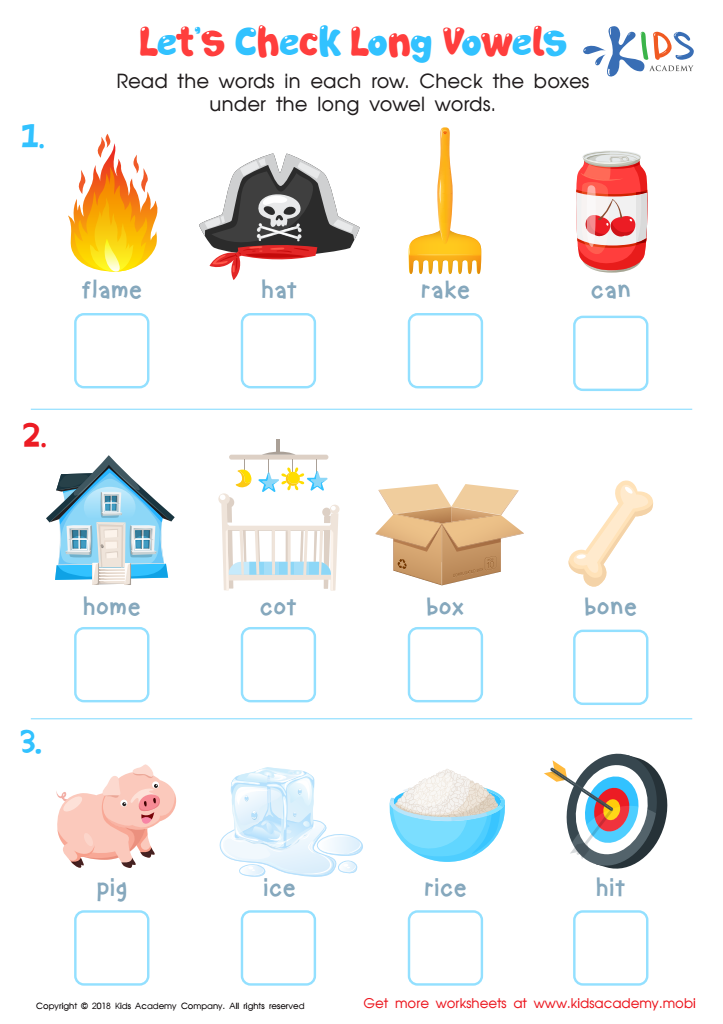

Let's Check Long Vowels: Assessment Worksheet
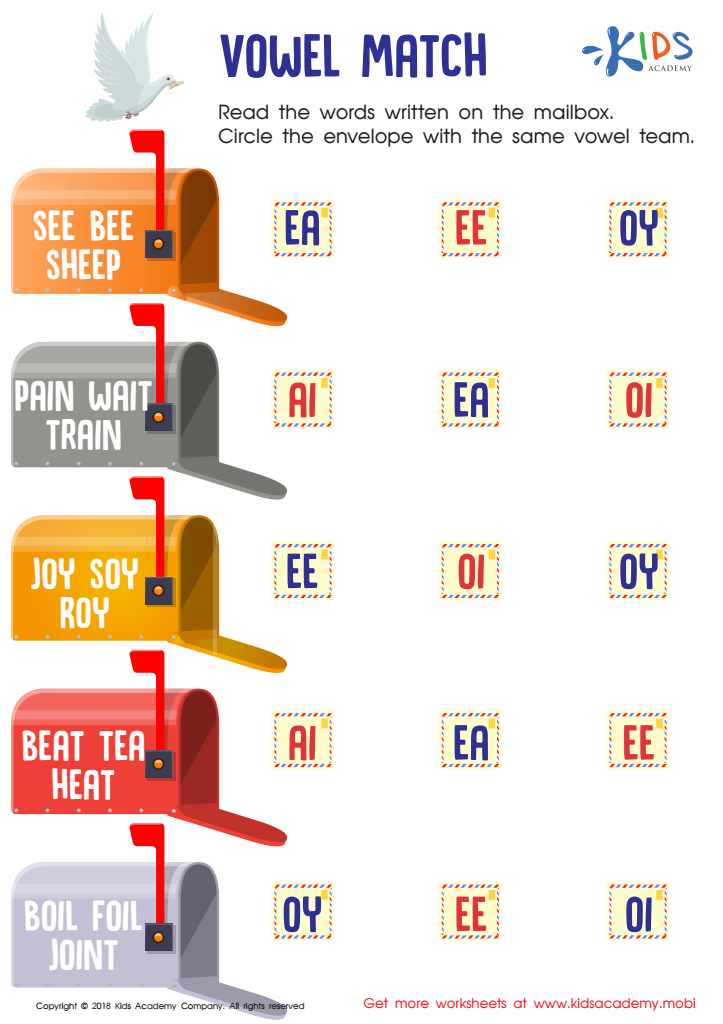

Vowel match Worksheet
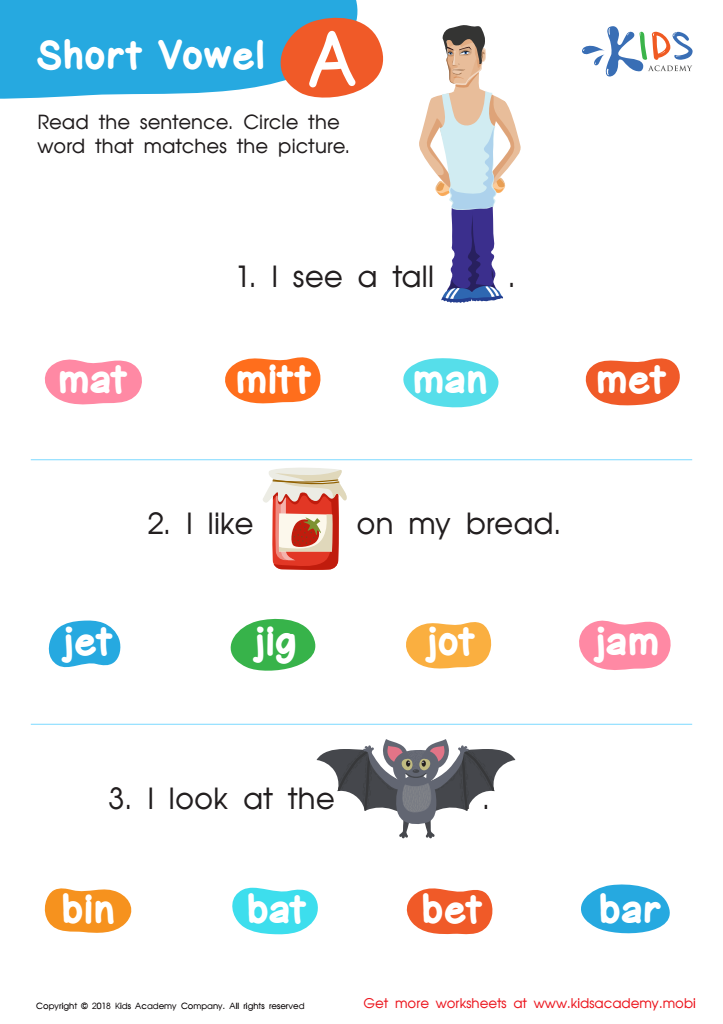

Short Vowel /a/ Worksheet


Short Vowel Sound U Worksheet Worksheet
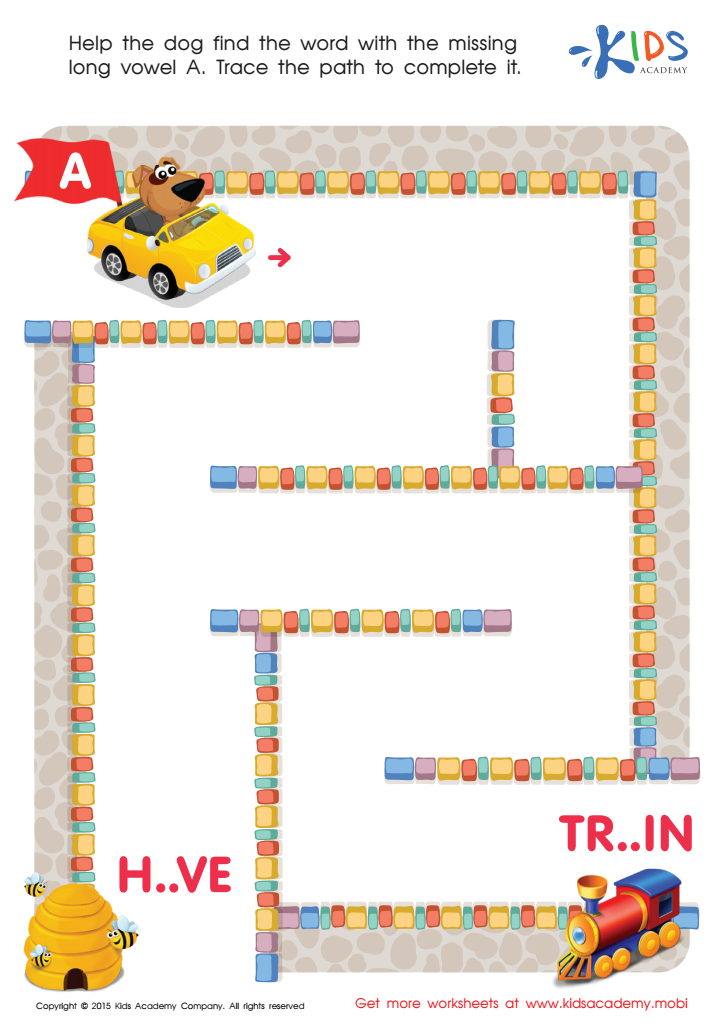

Long Vowel Sound A Worksheet


Short Vowels /e/, /i/, and /u/ Worksheet
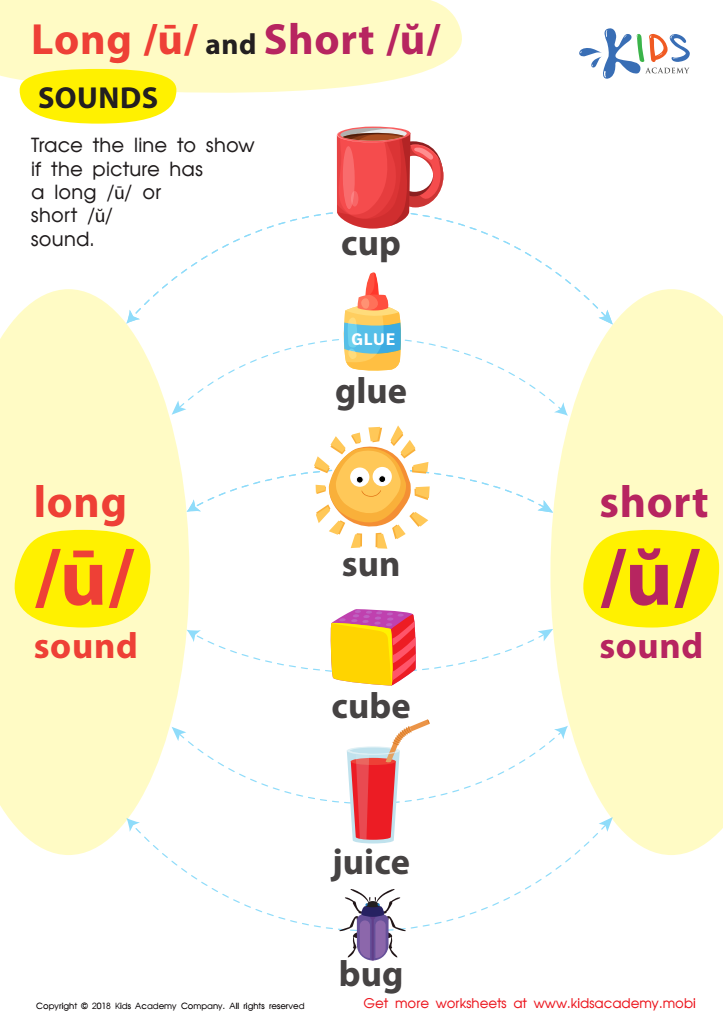

Reading: Long U and Short U Sounds Worksheet
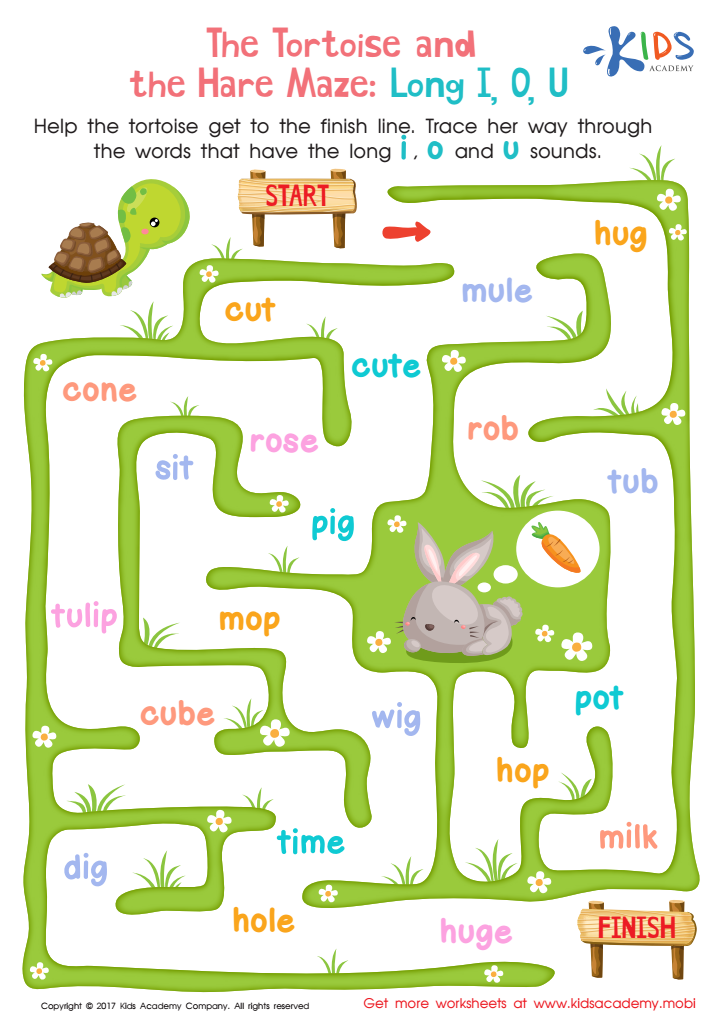

Long I, O, U Words Worksheet
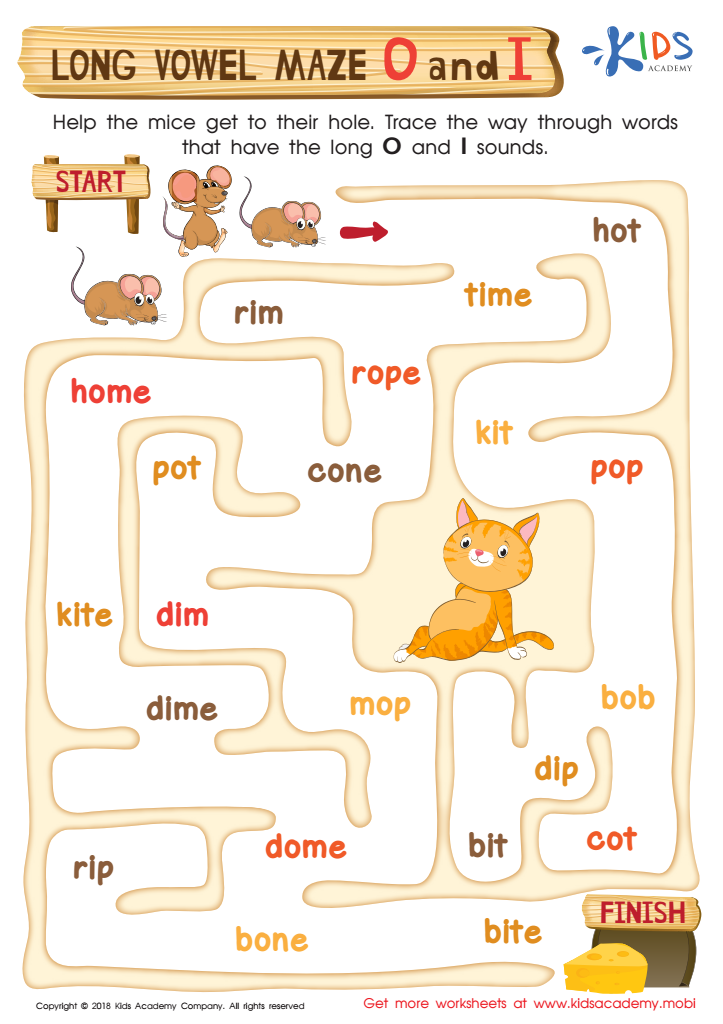

Long Vowel Maze /o/ and /i/ Worksheet
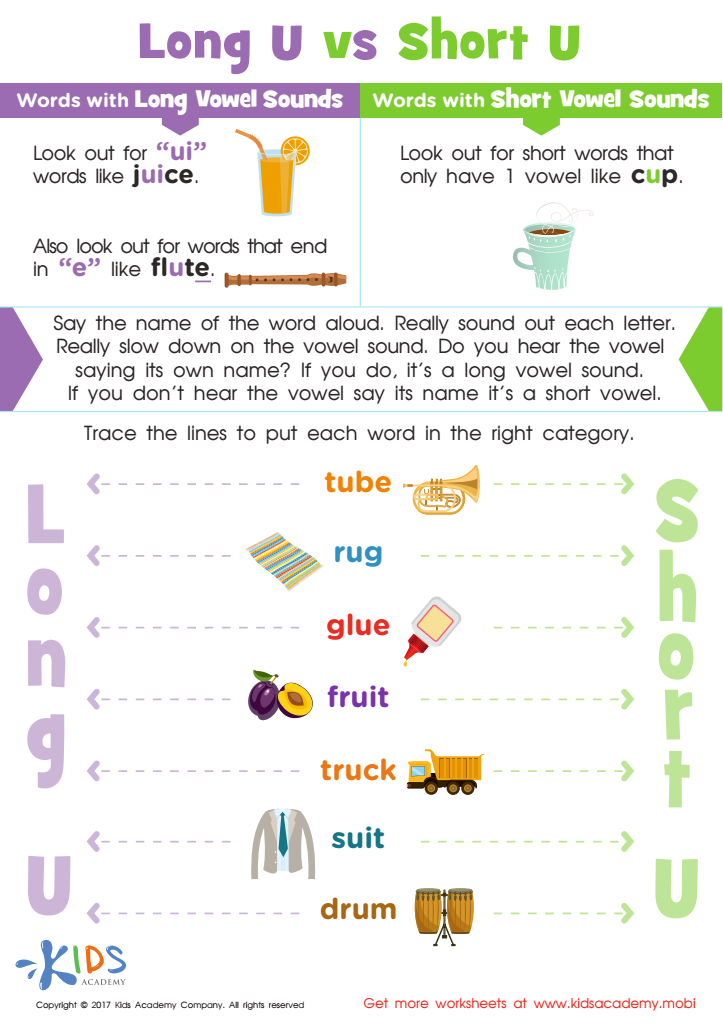

Long and Short Vowel U Spelling Worksheet
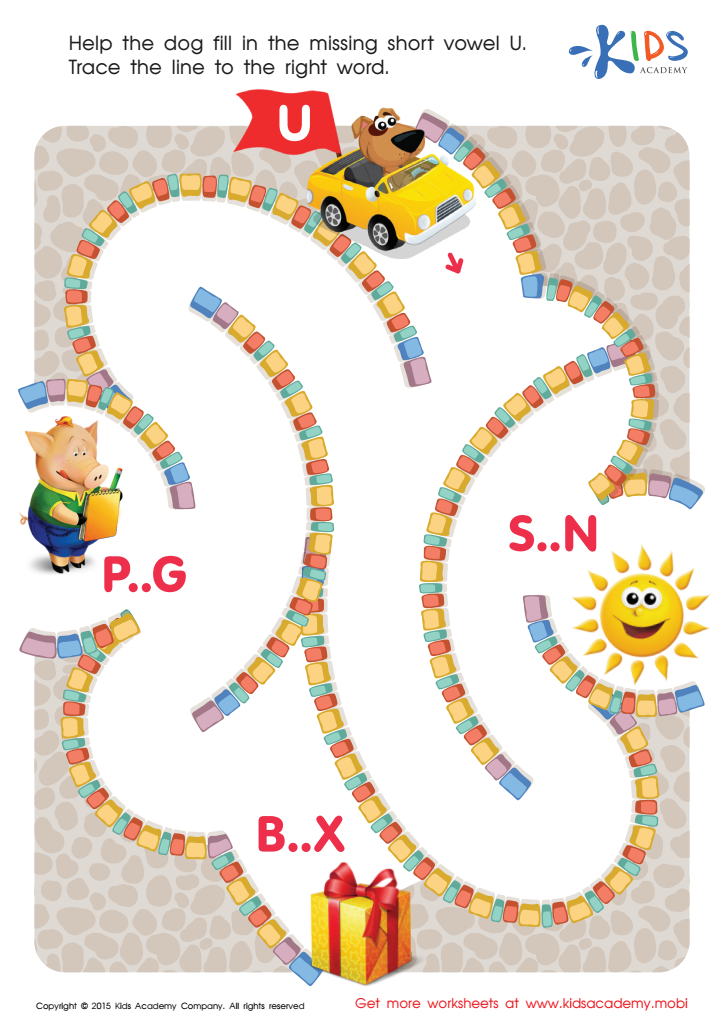

Short Vowel Sound U Worksheet


Short Vowel Eggs Worksheet
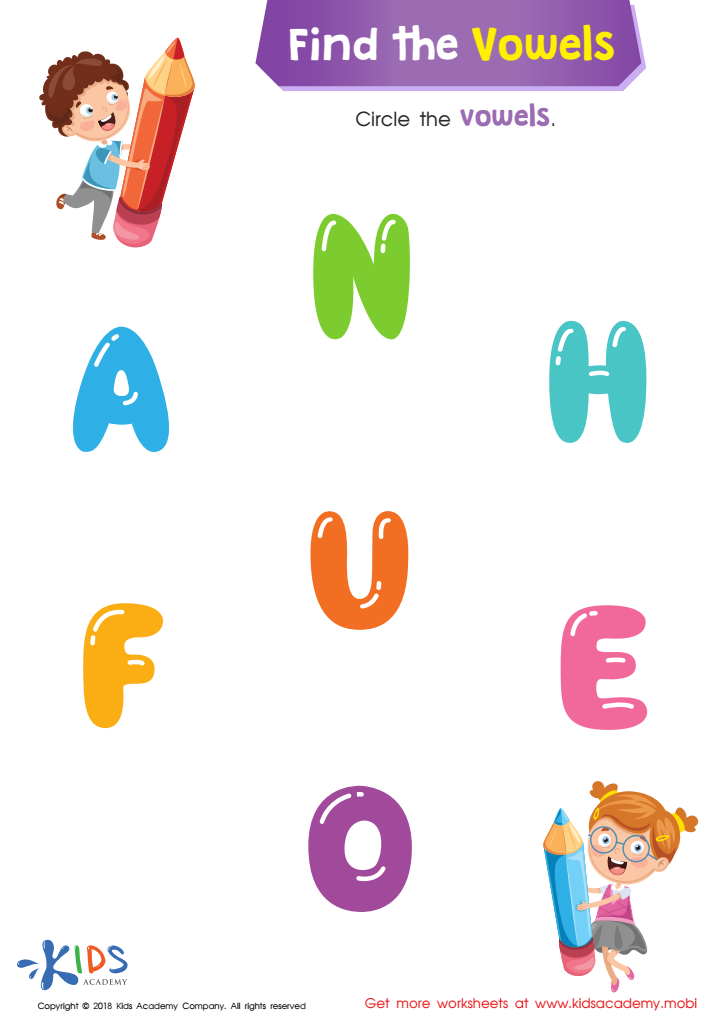

Find the Vowels Reading Worksheet


Short Vowel Sound I Worksheet


Long Vowel Sound A Worksheet Worksheet
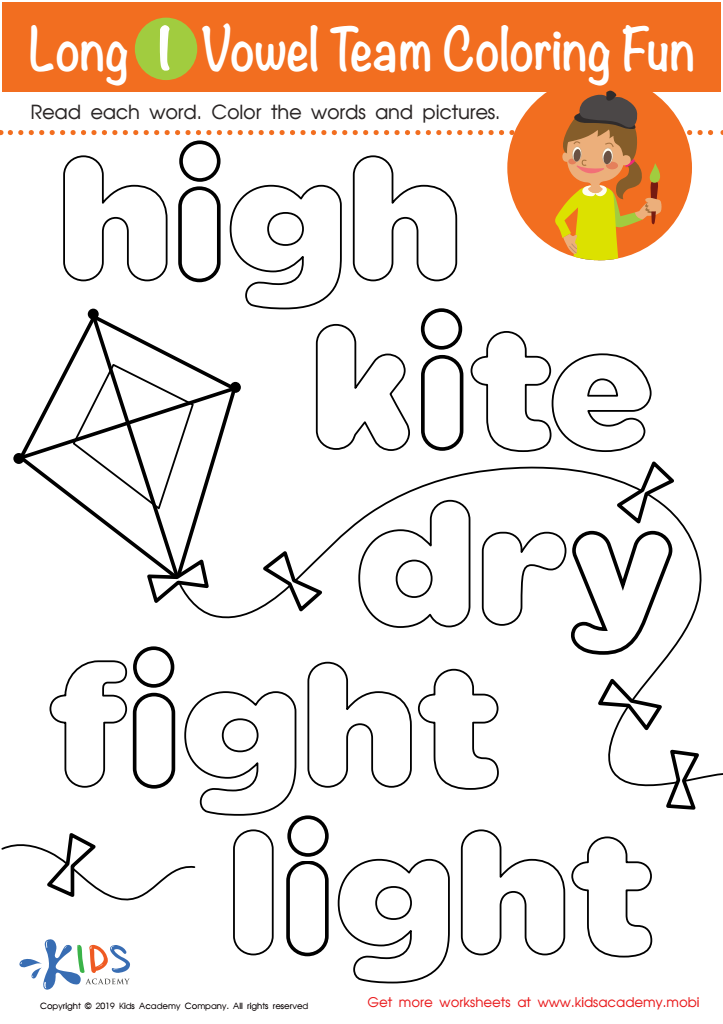

Long I Vowel Team Coloring Worksheet
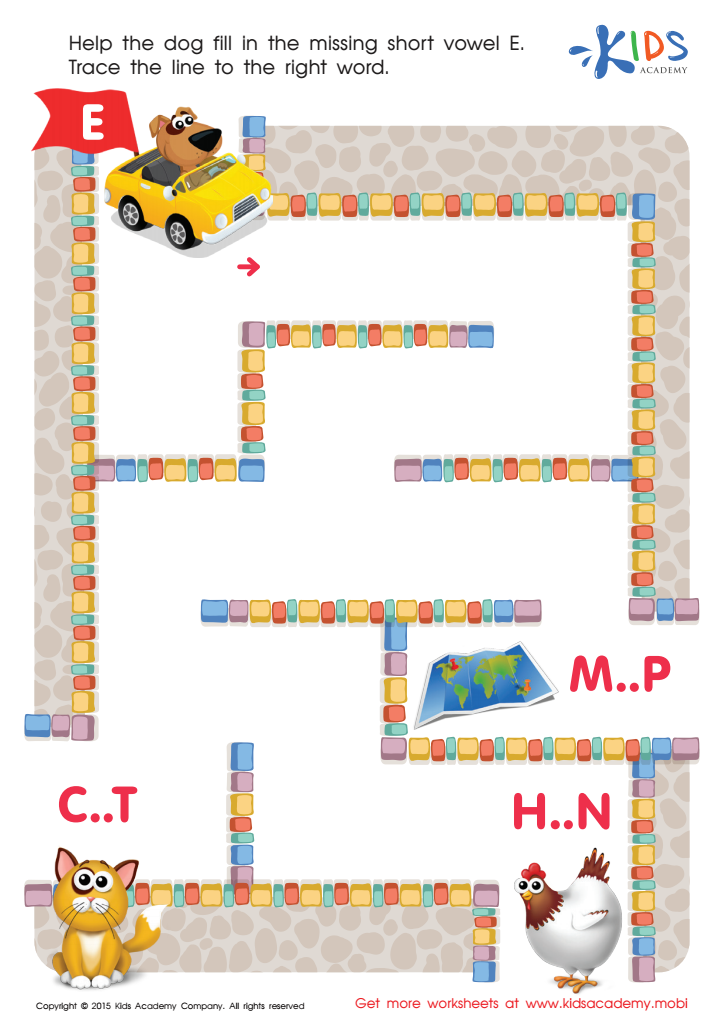

Short Vowel Sound E Worksheet
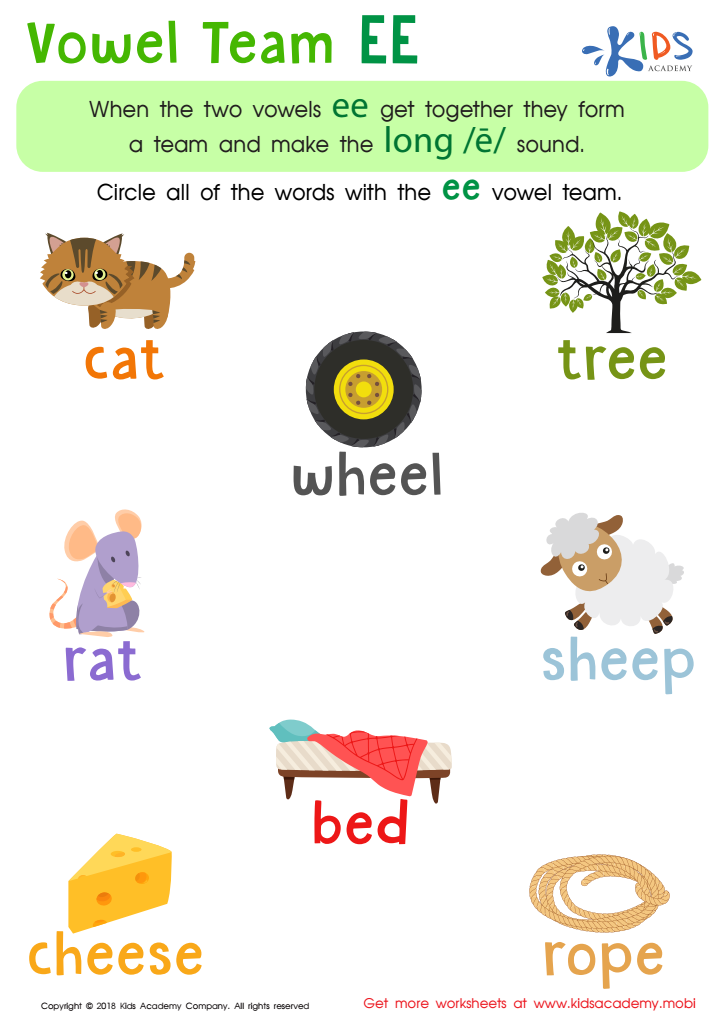

Reading: Vowel Team EE Worksheet
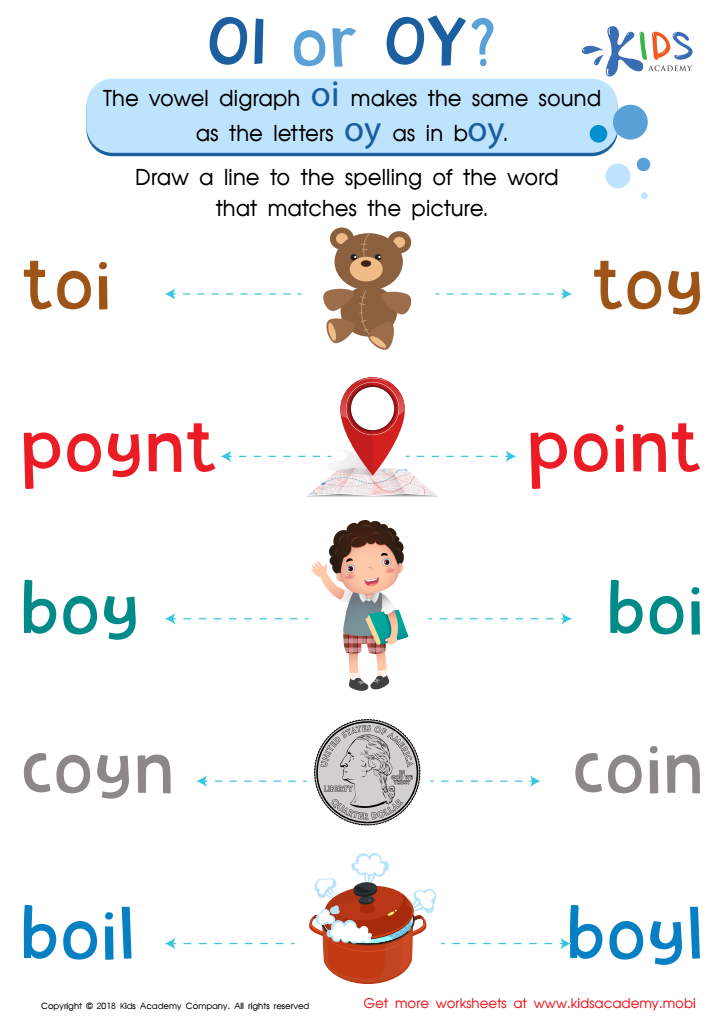

Reading: OI and OY Worksheet
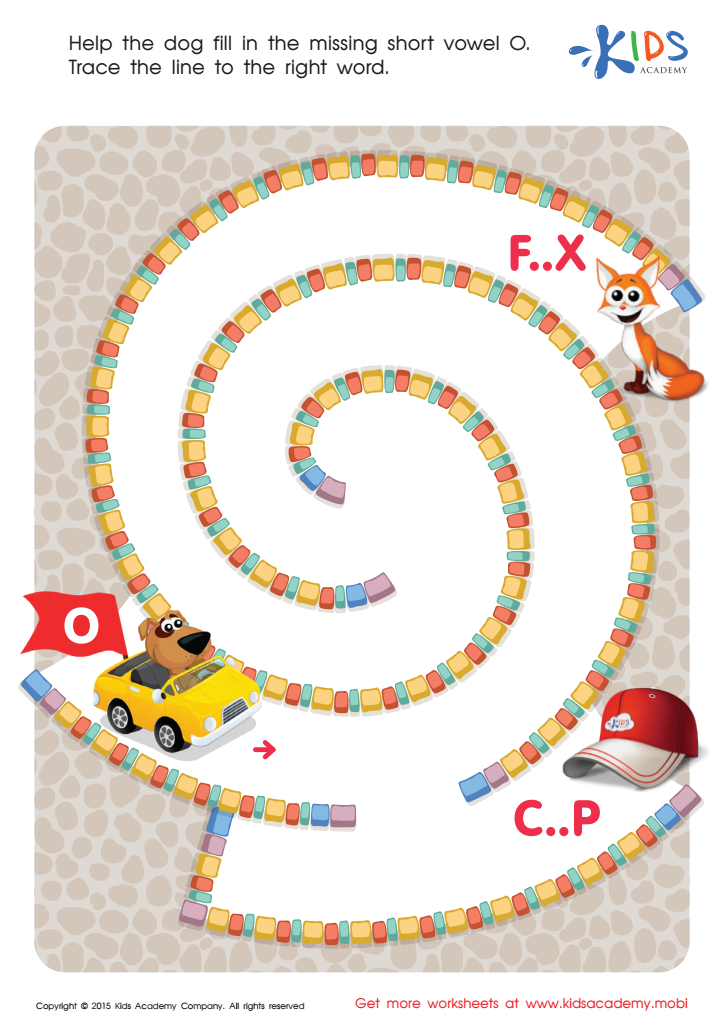

Short Vowel Sound O Worksheet
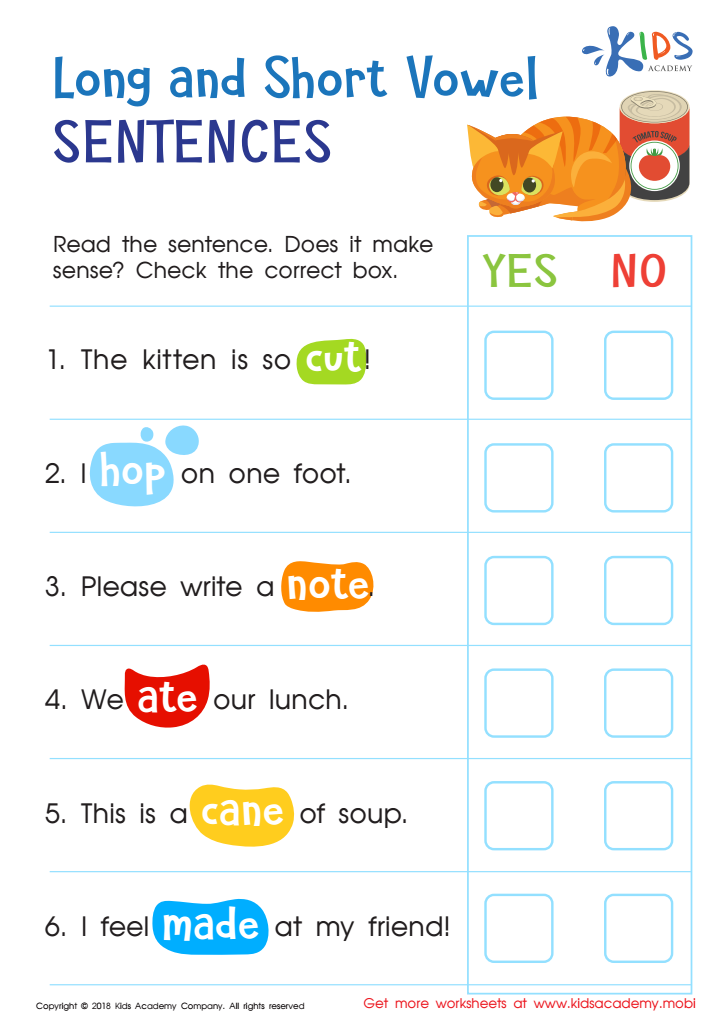

Long and Short Vowel Sentences: Assessment Worksheet
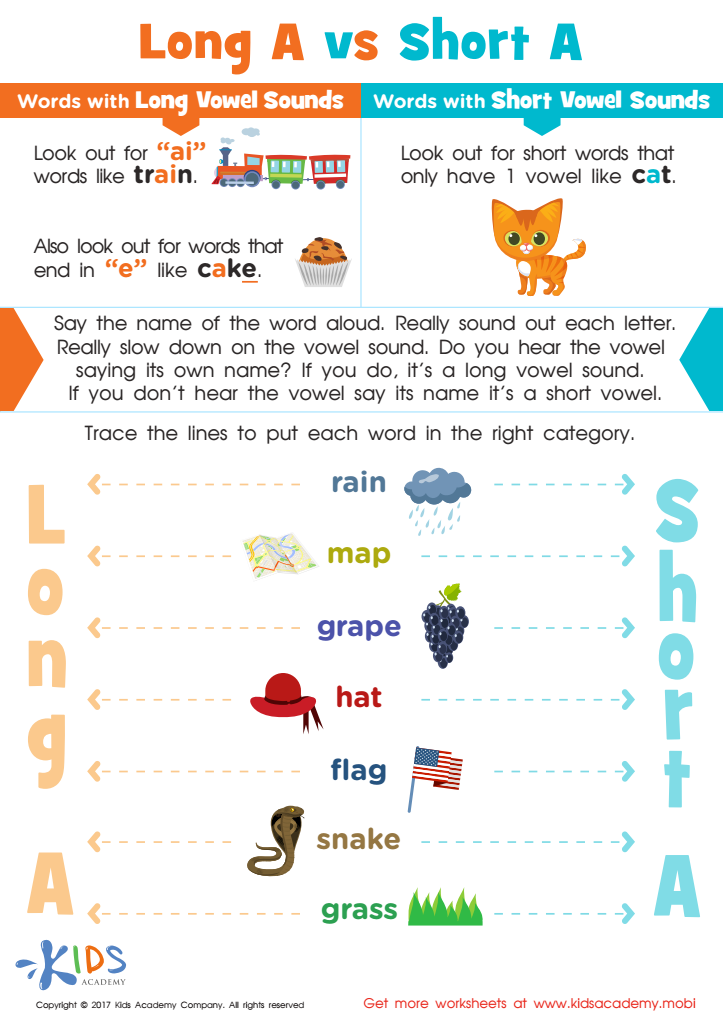

Long and Short Vowel A Spelling Worksheet


Long Vowel Sound O Worksheet
Vowel recognition is a fundamental aspect of early literacy, which is critical for children ages 4-8 as they embark on their educational journeys. At this stage, children develop essential reading and writing skills that serve as the foundation for future academic success. Vowels, being the core of English phonetics, appear in every word, and understanding their sounds and roles allows children to decode words more effectively and build reading fluency.
Parents and teachers should focus on vowel recognition because it enhances phonemic awareness, which is the ability to hear and manipulate sounds in spoken language. This skill is crucial for spelling, word recognition, and overall reading comprehension. For instance, knowing the difference between short and long vowel sounds helps kids spell words correctly and understand subtle differences in word meanings and pronunciations.
Moreover, fostering strong vowel recognition skills early on promotes a child's confidence in reading and in tackling new vocabulary. It also supports the development of a robust phonics foundation, which is integral for mastering more complex reading and writing tasks later on. By prioritizing vowel recognition, parents and teachers can ensure that children are well-equipped with the tools they need to navigate the intricacies of the English language, thus setting them up for continued academic growth and success.
 Assign to My Students
Assign to My Students



















